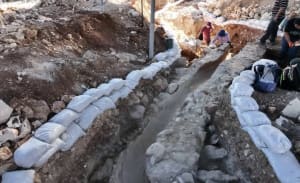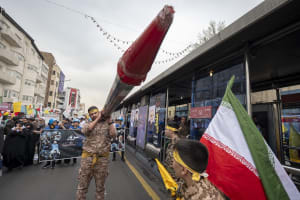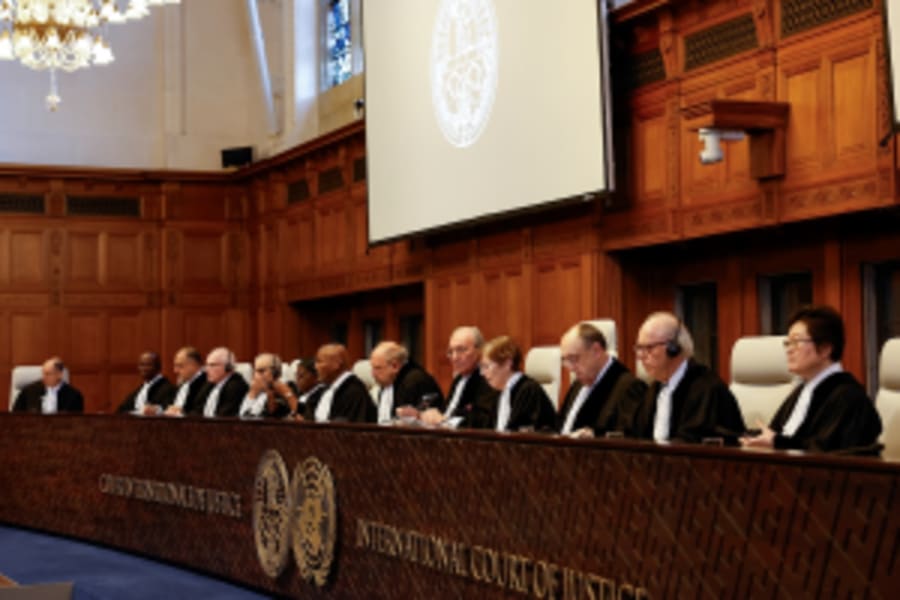'Extremely rare find' of Roman swords from Bar Kokhba Revolt discovered in Judean Desert cave
Cache of weapons were apparently deliberately hidden from Roman forces
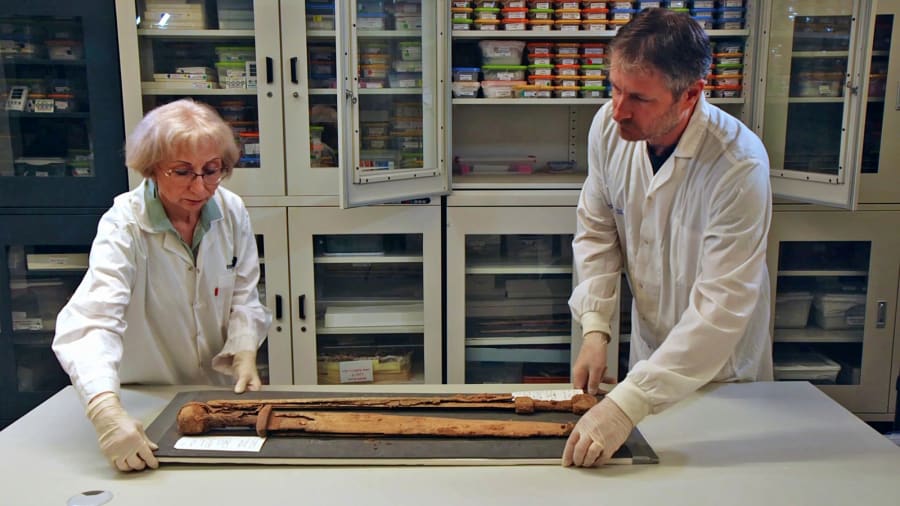
A cache of four Roman swords and a bayonet head from some 1,900 years ago was recently discovered hidden in a niche in a cave in the Ein Gedi Nature Reserve.
The ancient weapons were well-preserved due to the dry conditions and were displayed for the first time at a press conference in Jerusalem on Wednesday morning.
The weapons were apparently hidden by Jewish rebels in the caves after being looted from the Roman army.
The cave where the weapons were discovered was already known to archaeologists. About 50 years ago, fragmented remains of a Hebrew inscription written on a stalactite in ink were discovered in the same cave. The text was written in the ancient Hebrew script typical of the First Temple period.
The finds were made as part of a follow-up effort by Dr. Asaf Gayer of Ariel University, geologist Boaz Langford of Hebrew University, and Israel Antiquities Authority (IAA) photographer Shai Halevi, to capture the inscription with multispectral photography – typically infrared or ultraviolet photography – which is able to reveal details not visible to the naked eye.
While in the cave, Gayer noticed a Roman pilum – a spear-like weapon – in an excellent state of preservation. The group reported the find to the IAA, which followed up, together with the Judean Desert Cave Survey team.
During their careful exploration of the cave, the Roman swords were discovered.
“The blades have been preserved so well, they look like they could be picked up and used right now, even 2,000 years after they were forged,” Langford said. “You just realize that you are touching history, because here you are touching a find whose story you know.”
Three of the swords still had wooden scabbards attached. Also discovered were leather strips and wooden and metal objects belonging to the weapons.
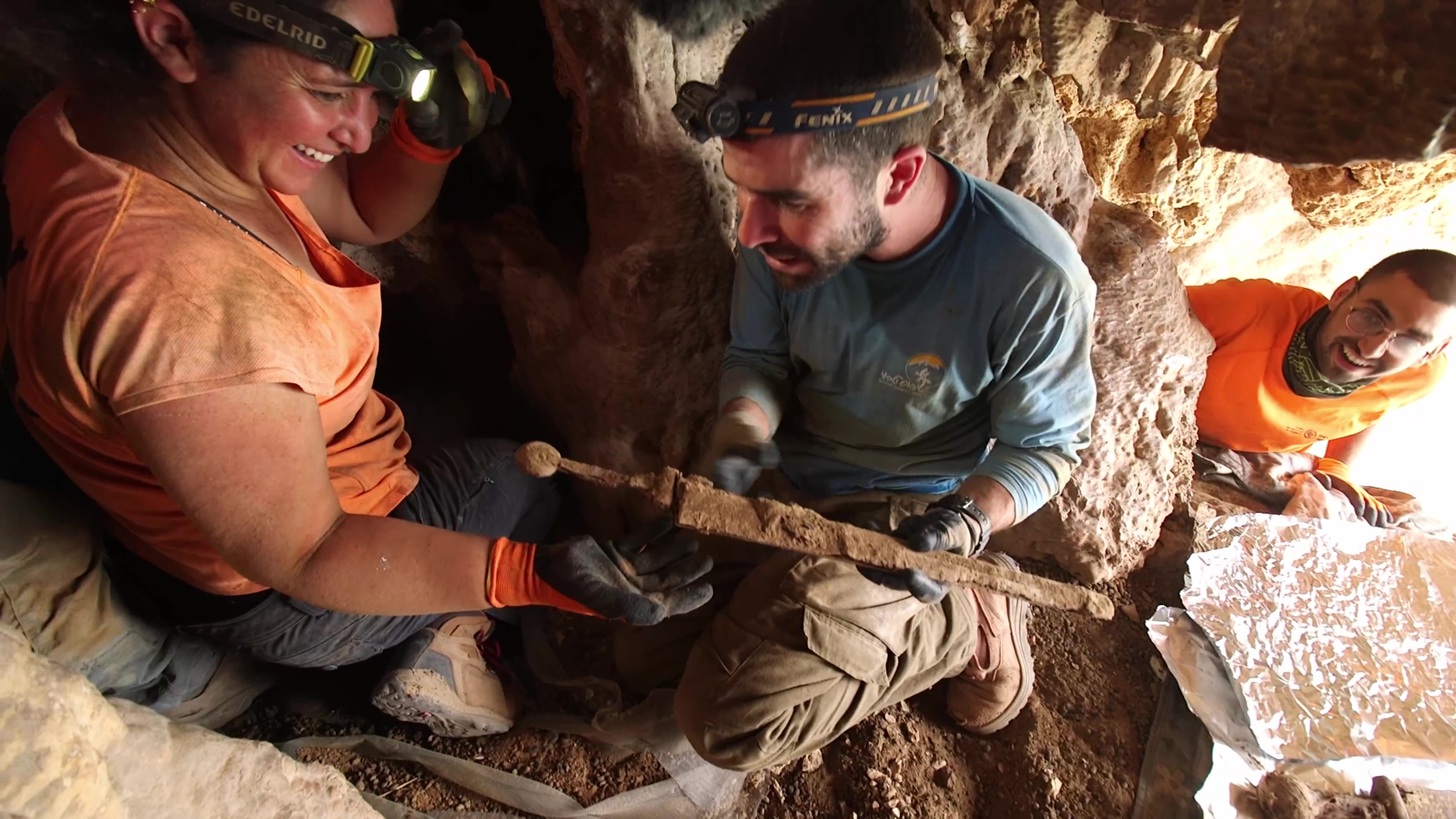
Dr. Eitan Klein, one of the directors of the Judean Desert Cave Survey Team, said the find was “extremely rare.”
“We’re talking about an extremely rare find, the likes of which have never been found in Israel,” Klein said.
He believes the find helps to “shed light” on the Bar Kokhba Revolt.
“This is a very rare and unique find on an international level that will shed light on the last moments of the war between the Jewish rebels and the Roman army at the time of the Bar Kochba revolt.”
The Bar Kokhba Revolt, which happened during the time of Emperor Hadrian between 132-135 A.D., is often called the Second Jewish Revolt, after the Great Revolt in 66-70 A.D.
The revolt is named after the leader, Simon Bar Kokhba, who organized a Jewish fighting force to drive Roman forces from the land of Israel.
According to Jewish tradition, Bar Kokhba was proclaimed to be the Messiah by the popular Rabbi Akiva, considered one of the most significant early rabbis.
The early Christian writer Justin Martyr identified the Bar Kokhba Revolt as the moment when Jewish authorities began to exclude Jewish believers in Yeshua from the synagogues and communities because they refused to proclaim Bar Kokhba as Messiah.

The All Israel News Staff is a team of journalists in Israel.
You might also like to read this:





